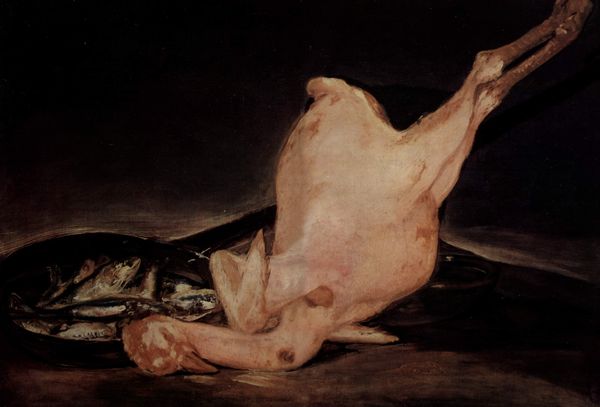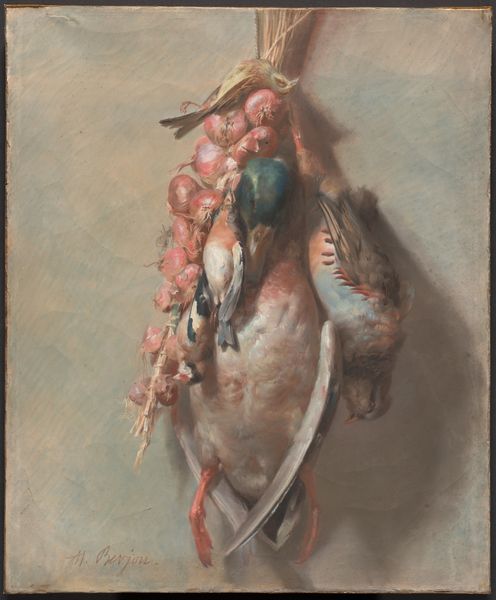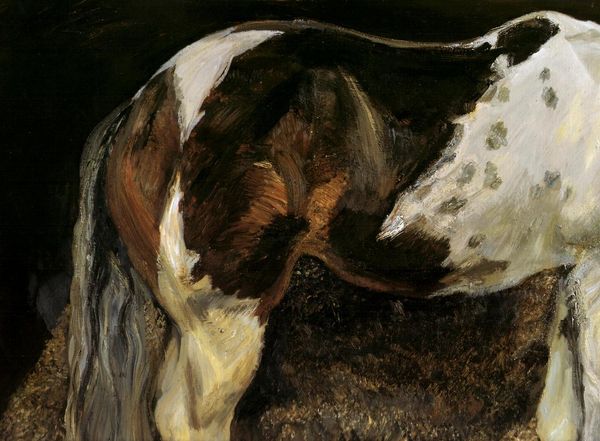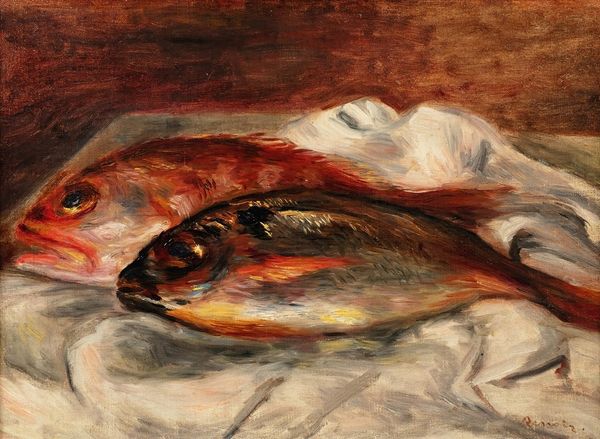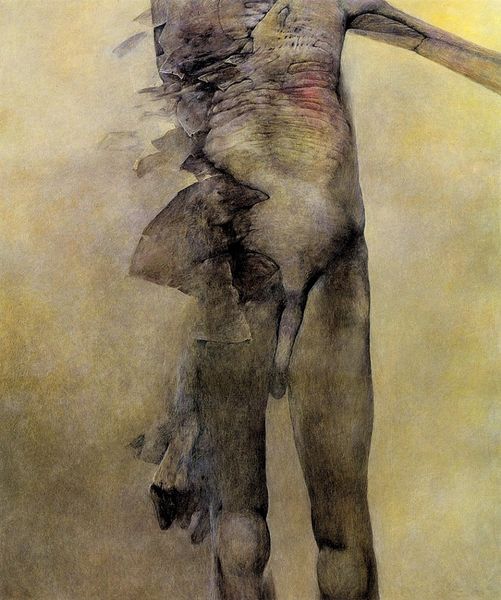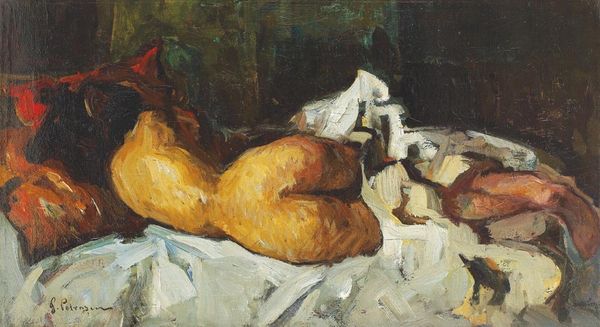
painting, oil-paint
#
painting
#
impressionism
#
oil-paint
#
oil painting
#
genre-painting
#
realism
Copyright: Public Domain: Artvee
Curator: Gustave Caillebotte's "Calf’s Head and Ox Tongue," painted around 1882, is quite the still life. What are your immediate reactions? Editor: It's unsettling. Viscerally so. The palette is almost delicate, but the subject matter feels brutal, almost like a challenge to accepted notions of beauty. It forces confrontation. Curator: Indeed. Caillebotte’s depiction can be contextualized within broader discussions about the representation of meat and the politics surrounding food, class, and consumption in 19th-century Paris. The art world often ignores the lived realities of marginalized communities, the daily work, like butchery, that went into feeding Paris. This can be seen as a feminist intervention to the history genre-painting. Editor: And it challenges traditional academic painting norms. While still-life works often showcase game meats, Caillebotte confronts us with the direct source—the slaughtered animal itself. The clinical, detached portrayal also speaks to a social disconnect from food production. This painting serves as a cultural document, a glimpse into Parisian working-class life, shaped by growing urbanization and labor relations. Curator: Furthermore, considering the context, this painting is overtly masculine, challenging our ideas around the intersections of masculinity and meat. It’s as if he is trying to grapple with what it means to be a man in this brave new, rapidly industrializing world. Editor: I find it hard to see it as a form of celebration. Instead, it feels mournful. Look at the diffused lighting and greyed color, they lack any vitality; as if Caillebotte is reminding us of the animal’s sacrifice. The butchered tongue, particularly, with its phallic symbolism feels loaded with the language of sacrifice, not triumph. Curator: Yes, there's an undeniable morbidity to the scene, which allows a multilayered interpretation when viewed through a social and cultural lens. It isn't just a detached observation of a butchered calf, but rather, an artistic commentary, loaded with the weight of its time. Editor: For me, Caillebotte's brutal depiction disrupts expectations of what is to be considered worthy, of the attention given artistic focus. Curator: I agree, and its frankness is what makes it such a lasting social statement.
Comments
No comments
Be the first to comment and join the conversation on the ultimate creative platform.
